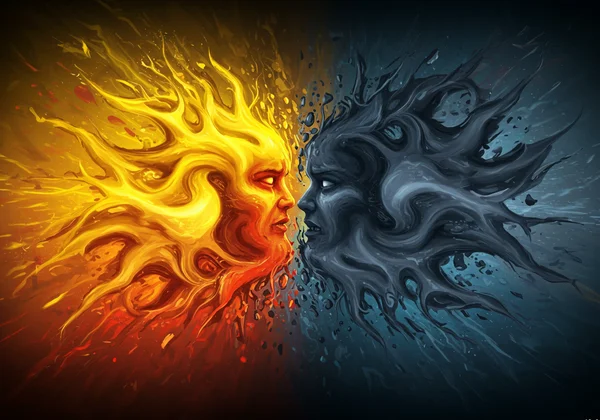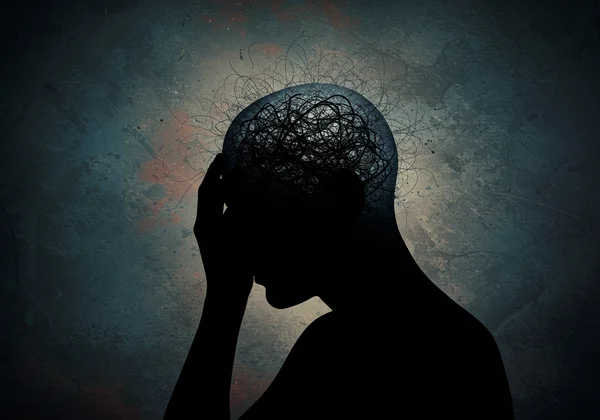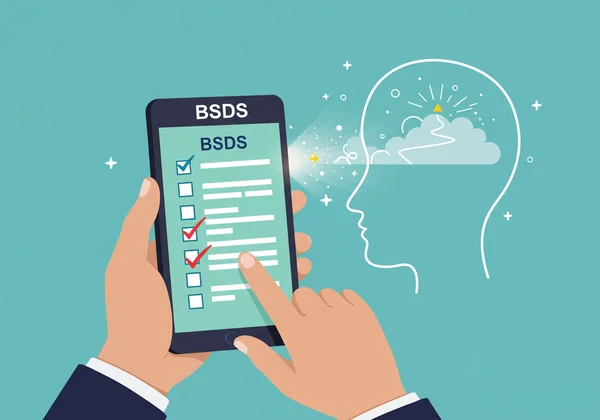Comprendere gli Episodi Misti Bipolari: Il Ruolo della BSDS nell'Identificazione delle Caratteristiche Miste
Ti sei mai sentito intensamente felice e profondamente triste, tutto in una volta? O incredibilmente energico ma tormentato dalla disperazione? Questo stato confusionario e spesso terrificante è noto come episodio misto bipolare, un aspetto impegnativo del disturbo bipolare che può lasciare gli individui sopraffatti e incompresi. Quali sono i segni del disturbo bipolare quando si manifesta in questo modo? Questa guida completa chiarirà cosa sono gli episodi misti, i loro sintomi unici e perché comprenderli è un primo passo cruciale verso una gestione efficace e la ricerca del giusto supporto. Se queste sensazioni ti risuonano, uno strumento strutturato può offrire una chiarezza iniziale, e l'autovalutazione BSDS può essere un punto di partenza utile.
Definizione di Episodi Misti Bipolari e Caratteristiche Miste: Un'Introduzione ai Concetti BSDS
Comprendere un episodio misto inizia con il superare l'idea semplice che il disturbo bipolare sia un interruttore tra umori alti e bassi. Immagina invece che entrambi gli interruttori siano accesi contemporaneamente. Questa è l'essenza di uno stato misto, in cui i sintomi di mania e depressione si verificano contemporaneamente o in rapidissima successione durante il giorno. L'esperienza non è una miscela delicata, ma una collisione caotica, spesso dolorosa, di stati emotivi e fisici opposti. È un motivo chiave per cui uno strumento di screening chiaro può essere così prezioso per aiutare a decifrare questi sentimenti complessi.

Cosa Sono le Caratteristiche Miste? Comprendere i Criteri del DSM-5
Nella pratica clinica moderna, il termine 'episodio misto' è stato aggiornato. Il Manuale Diagnostico e Statistico dei Disturbi Mentali, Quinta Edizione (DSM-5), utilizza ora il qualificatore 'con caratteristiche miste'. Questo consente una comprensione più sfumata, poiché può essere applicato a un episodio maniacale, ipomaniacale o depressivo maggiore. Affinché una diagnosi includa questo qualificatore, un individuo deve soddisfare i criteri completi per il suo episodio dell'umore primario (ad esempio, mania) sperimentando contemporaneamente almeno tre sintomi del polo opposto (ad esempio, depressione) quasi ogni giorno. Questo cambiamento riconosce che questi stati misti sono una caratteristica degli episodi dell'umore, non un tipo di episodio separato.
Quando Mania e Depressione si Scontrano: Un'Esperienza Unica
L'esperienza vissuta di avere caratteristiche miste è profondamente disorientante. Una persona potrebbe avere pensieri accelerati, alta energia e impulsività della mania, ma invece di euforia, prova intensa irritabilità, ansia e profonda tristezza. Potrebbe sentirsi fisicamente carico e irrequieto, incapace di dormire, ma contemporaneamente oppresso da sentimenti di indegnità e disperazione. Questa battaglia interiore crea uno stato di miseria agitata che è distinto dalla pura mania o dalla pura depressione, rendendolo uno degli aspetti più difficili e ad alto rischio del disturbo bipolare. Ottenere informazioni sul tuo specifico schema di sintomi è un primo passo fondamentale, ed è qui che un test bipolare gratuito può fornire informazioni preziose.
Identificare i Segni di un Episodio Misto
Riconoscere i segni di un episodio misto è essenziale per cercare aiuto tempestivo e appropriato. Poiché i sintomi sono una miscela paradossale, possono essere facilmente identificati erroneamente o liquidati come solo una 'brutta giornata'. Tuttavia, la combinazione di alta energia e umore negativo crea uno stato particolarmente volatile che richiede attenzione. Comprendere questi segni può darti la forza di comunicare più efficacemente con i professionisti sanitari.
Manifestazioni Emotive e Cognitive: Lo Stato di Depressione Agitata
Una delle presentazioni più comuni di uno stato misto è spesso descritta come 'depressione agitata'. È qui che il mondo interiore è in tumulto. I segni chiave includono:
-
Intensa Irritabilità: Piccole frustrazioni possono scatenare rabbia esplosiva o agitazione prolungata.
-
Grave Ansia e Panico: Un costante senso di terrore, preoccupazione o nervosismo è comune.
-
Pensieri Accelerati (Disfotici): A differenza delle idee creative e grandiose della mania euforica, questi pensieri sono spesso negativi, autocritici e opprimenti.
-
Sentimenti di Indegnità e Colpa: Sintomi depressivi classici sono presenti, scontrandosi con l'alta energia.
-
Ideazione Suicidaria: La combinazione di disperazione depressiva e impulsività maniacale rende questo un periodo di rischio significativamente aumentato.

Se questi segni emotivi ti sembrano familiari, è importante prenderli sul serio. Documentare le tue esperienze può essere uno strumento potente per la consapevolezza di sé e per future conversazioni con un medico. L'utilizzo di uno strumento online come lo screening BSDS può aiutarti a organizzare queste osservazioni.
Indicatori Comportamentali e Cambiamenti di Energia
Il caos interno di un episodio misto si manifesta spesso in comportamenti osservabili e sensazioni fisiche. Questi segni sono spesso ciò che familiari o amici notano per primi. Cerca:
- Aumento della Loquacità (Eloquio Forzato): Parlare rapidamente e sentire di non potersi fermare, ma il contenuto può essere ansioso o pessimista.
- Irrequietezza e Vagabondaggio: Incapacità di stare fermi, sentirsi spinti da un motore interno ma senza avere dove andare.
- Comportamento Impulsivo o Rischioso: Impegnarsi in attività rischiose (ad esempio, spese folli, uso di sostanze) guidate dall'energia maniacale ma alimentate da emozioni negative.
- Diminuito Bisogno di Sonno: Sentirsi carico e incapace di dormire per giorni, ma non sentirsi riposati, solo più esausti e agitati.
- Improvvisi Scatti di Energia: Nonostante ci si senta emotivamente giù, si potrebbero improvvisamente iniziare una dozzina di progetti, solo per abbandonarli in frustrazione.
Perché gli Episodi Misti Sono Particolarmente Impegnativi
Gli episodi misti sono considerati una delle presentazioni più gravi e pericolose del disturbo bipolare. La combinazione unica di sintomi non solo causa un estremo disagio, ma complica anche la gestione e aumenta i rischi, rendendo l'identificazione accurata fondamentale. È uno stato che richiede un'attenzione attenta e professionale.
Rischio Aumentato e Difficoltà di Gestione
Il pericolo principale di un episodio misto risiede nella fusione della disperazione depressiva con l'energia e l'impulsività maniacale. Questa combinazione aumenta significativamente il rischio di autolesionismo e suicidio. L'individuo ha la disperazione della depressione e l'energia per agire su quei sentimenti. Inoltre, questi stati possono essere più difficili da trattare rispetto alla pura mania o depressione. Alcuni farmaci che funzionano per un polo possono peggiorare l'altro, richiedendo un approccio esperto e cauto da parte di uno psichiatra. Ecco perché un'autovalutazione preliminare e strutturata può fornire una base cruciale prima di ottenere aiuto professionale.

Distinguere gli Episodi Misti dal Ciclo Rapido
È importante chiarire un comune punto di confusione: le caratteristiche miste non sono la stessa cosa del ciclo rapido. Il ciclo rapido si riferisce all'avere quattro o più episodi dell'umore distinti (maniacali, ipomaniacali o depressivi) entro un periodo di 12 mesi. Questi episodi sono separati da un periodo di remissione completa o parziale. Al contrario, un episodio misto comporta sintomi di mania e depressione che si verificano contemporaneamente o in rapida successione all'interno dello stesso episodio. Comprendere questa distinzione è vitale per una diagnosi e una gestione accurate, e un questionario completo sui disturbi dell'umore è progettato per aiutare a identificare queste sfumature.
Agire: Quando Cercare Aiuto Professionale
Se riconosci i segni di un episodio misto in te stesso o in una persona cara, è un chiaro segnale per cercare aiuto professionale. La volatilità e il rischio associati a questi stati significano che l'autogestione non è sufficiente. Fare il passo di consultare un professionista è un atto di forza e la cosa più importante che puoi fare per il tuo benessere.
Quando i Tuoi Sintomi Richiedono una Consultazione Professionale
Dovresti cercare una consultazione professionale se sperimenti una combinazione persistente di sintomi ad alta energia e basso umore che interrompe la tua vita quotidiana, le tue relazioni o il tuo lavoro. Se hai pensieri negativi accelerati insieme all'incapacità di dormire, o se ti senti intensamente irritabile mentre ti impegni in comportamenti impulsivi, è ora di parlare con un medico o un professionista della salute mentale. Non aspettare che la tempesta passi da sola. Ottenere chiarezza può essere il primo passo verso la stabilità, e puoi iniziare il tuo screening sulla nostra piattaforma per raccogliere informazioni per quella conversazione.
Come la BSDS Fornisce un Primo Passo Verso la Chiarezza
Navigare questi sintomi confusi può sembrare isolante, ma non devi farlo da solo. Sebbene non sostituisca una diagnosi clinica, uno strumento di screening online può essere un primo passo inestimabile. La Bipolar Spectrum Diagnostic Scale (BSDS) è un questionario scientificamente validato progettato per identificare le caratteristiche chiave associate allo spettro bipolare. Sulla nostra piattaforma, puoi fare un'autovalutazione BSDS gratuita e confidenziale per ottenere informazioni preliminari sui tuoi sintomi. Questo può aiutarti a strutturare i tuoi pensieri e fornire un punto di partenza concreto per una discussione produttiva con un operatore sanitario.

Il Tuo Percorso Avanti
Comprendere gli episodi misti bipolari è un passo cruciale per sfatare uno degli aspetti più impegnativi della condizione. Riconoscere che la miscela caotica di energia maniacale e disperazione depressiva è uno stato clinico noto può ridurre l'autocolpevolizzazione e fornire un percorso chiaro da seguire. Ti dà il potere di osservare i tuoi sintomi, articolare la tua esperienza e cercare il giusto supporto.
Ricorda, strumenti di autovalutazione come la Bipolar Spectrum Diagnostic Scale offerti su il nostro strumento online sono eccellenti per ottenere una chiarezza iniziale e prepararsi per una consultazione medica. Tuttavia, una diagnosi professionale è essenziale per creare un piano di gestione sicuro ed efficace. Non devi affrontare queste complessità da solo. Fare questo primo passo verso la comprensione della tua salute mentale è un potente atto di auto-cura.
Domande Frequenti sugli Episodi Misti Bipolari e la BSDS
Qual è la scala diagnostica per il disturbo bipolare?
Non esiste un'unica 'scala diagnostica' che diagnostichi definitivamente il disturbo bipolare da sola. La diagnosi viene effettuata da un professionista sanitario qualificato sulla base di una valutazione clinica completa, che include un colloquio dettagliato sui tuoi sintomi, sulla tua storia personale e familiare. Tuttavia, strumenti di screening come la Bipolar Spectrum Diagnostic Scale (BSDS) vengono utilizzati per aiutare a identificare gli individui che potrebbero essere a rischio e che beneficerebbero di una valutazione completa.
La BSDS è una diagnosi definitiva di disturbo bipolare?
Assolutamente no. È fondamentale capire che il test BSDS disponibile sul nostro sito è uno strumento di screening, non uno strumento diagnostico. Aiuta a identificare sintomi e schemi coerenti con lo spettro bipolare. Un punteggio elevato suggerisce che una valutazione professionale è fortemente raccomandata, ma non significa che tu abbia il disturbo bipolare. Solo uno psichiatra o un altro professionista della salute mentale qualificato può fornire una diagnosi ufficiale dopo una valutazione approfondita.
Un test può distinguere la depressione bipolare dalla depressione unipolare?
Questa è una delle aree chiave in cui uno strumento di screening come la BSDS è particolarmente utile. La BSDS include domande su esperienze relative all'elevazione dell'umore, all'irritabilità e ai cambiamenti di energia che sono caratteristici dello spettro bipolare ma non della depressione unipolare. Sebbene non possa distinguere definitivamente tra i due, può evidenziare indicatori che suggeriscono la possibile presenza di una condizione dello spettro bipolare, inducendo un'indagine clinica più mirata. Puoi esplorare la BSDS per vedere come affronta questo aspetto.
Quanto è accurato il test BSDS?
La Bipolar Spectrum Diagnostic Scale (BSDS) è uno strumento di screening scientificamente validato che ha dimostrato una buona sensibilità e specificità negli studi clinici per l'identificazione delle caratteristiche dello spettro bipolare. Ciò significa che è efficace nell'identificare correttamente le persone che potrebbero avere la condizione. Tuttavia, la sua accuratezza dipende dalla sincerità dell'autovalutazione e, come ogni strumento di screening, non è perfetto al 100%. Il suo valore maggiore è come primo passo affidabile e basato sull'evidenza per ottenere una chiarezza iniziale.